No-Sew Hand Puppet Crafts for Kids
Are you ready to dive into a world of creativity and fun? No-sew hand puppet crafts are not just a delightful way to spend time; they also spark imagination and bring stories to life! Imagine your child’s eyes lighting up as they create their very own puppet that can dance, sing, or tell a story. These crafts are perfect for kids of all ages, offering a hands-on experience that enhances their fine motor skills while allowing them to express their unique personalities. Plus, the best part? You don’t need to be a sewing expert to make these adorable creations!
No-sew puppets are incredibly versatile. You can turn simple materials into fantastic characters with just a few snips and some glue. Whether it’s a fluffy monster, a charming animal, or a whimsical fairy tale character, the possibilities are endless! This article will guide you through various projects that are not only easy to follow but also packed with fun. So, gather your materials, unleash your creativity, and let’s get crafting!
These puppet-making projects are designed to be engaging and educational, making them perfect for family activities, school projects, or playdates. They encourage teamwork and collaboration, as kids can work together to create their puppet show. So, what are you waiting for? Let’s jump into the world of no-sew hand puppets and watch as your child’s imagination takes flight!
No-sew crafts offer numerous advantages for children, including enhancing creativity, improving fine motor skills, and providing an engaging way to express their imagination without the need for sewing skills or tools. Kids can explore their artistic side while developing essential skills like cutting, gluing, and assembling different materials. This hands-on approach not only keeps them entertained but also boosts their confidence as they see their ideas come to life. Who knew that a simple piece of fabric could turn into a vibrant character ready to tell stories?
Gathering the right materials is essential for successful no-sew puppet making. Common supplies include:
- Felt or fabric scraps
- Googly eyes
- Glue (preferably non-toxic)
- Scissors
- Markers or paint for decoration
These materials are easily accessible and safe for kids to use. You might even have some lying around the house, making it a budget-friendly project!
Selecting suitable fabric can greatly impact the puppet's appearance and durability. Soft, colorful materials like felt or fleece are ideal for creating vibrant, kid-friendly puppets that are easy to manipulate. Felt, in particular, comes in a variety of colors and is sturdy enough to withstand the playful handling of little hands. Using different textures can also add an exciting dimension to the puppets, making them more appealing and tactile!
Using recycled materials for puppet crafts is a great way to teach kids about sustainability. Old clothes, fabric remnants, and cardboard can be transformed into unique puppets while promoting environmental awareness. Not only does this approach reduce waste, but it also encourages creativity as kids think outside the box to repurpose items. Imagine turning a worn-out sock into a funky puppet or using a cardboard box to create a puppet theater!
When crafting with children, safety is paramount. Ensure all materials are non-toxic and that kids are supervised, especially when using scissors or glue, to prevent accidents during the crafting process. Setting up a designated crafting area can help keep things organized and safe. Additionally, encouraging children to clean up after themselves teaches responsibility while ensuring a safe environment for future projects.
Starting with easy designs helps build confidence in young crafters. Simple shapes like animals, monsters, or characters can be created quickly, making them perfect for beginners or group activities. For example, a basic sock puppet can be transformed into a colorful dog or a cheeky cat with just a few embellishments. The satisfaction of completing a project will encourage kids to try more complex designs as their skills develop!
Incorporating themes into puppet making can enhance storytelling and imaginative play. Themes like animals, fairy tales, or superheroes can inspire kids to create characters that reflect their interests. For instance, a puppet show based on their favorite storybook can be a fantastic way to engage them in reading while allowing them to express their interpretations through their puppets. The combination of crafting and storytelling fosters a love for creativity that can last a lifetime!
Puppets can be powerful tools for storytelling. Kids can use their creations to act out stories, enhancing their narrative skills and encouraging collaboration during group performances or solo play. The act of bringing characters to life can deepen their understanding of story arcs, emotions, and character development. Plus, it’s a blast to see how their imagination unfolds as they create dialogue and scenarios for their puppets!
Organizing a puppet show can be a fun way to showcase kids' creations. This activity encourages teamwork, boosts confidence, and provides an opportunity for children to share their imaginative stories with an audience. Setting up a simple stage with a curtain made from a bed sheet can transform your living room into a theater! Invite family and friends to watch the show, and watch as your little ones take center stage, performing their heart out!
Q: What age group is suitable for no-sew puppet crafts?
A: No-sew puppet crafts are perfect for children aged 4 and up, with adult supervision. Younger kids can enjoy the process with guidance, while older kids can take on more complex designs.
Q: Can I use materials other than felt?
A: Absolutely! You can use various materials like old clothes, cardboard, paper bags, or even plastic bottles. Get creative with whatever you have at home!
Q: How long does it take to make a puppet?
A: The time can vary based on the design, but simple puppets can be made in about 30 minutes to an hour. More intricate designs may take longer, especially if kids want to add lots of decorations.
Q: Is it messy to make puppets?
A: Crafting can get a little messy, especially with glue and decorations. It’s a good idea to set up a crafting area that can be easily cleaned up afterward!
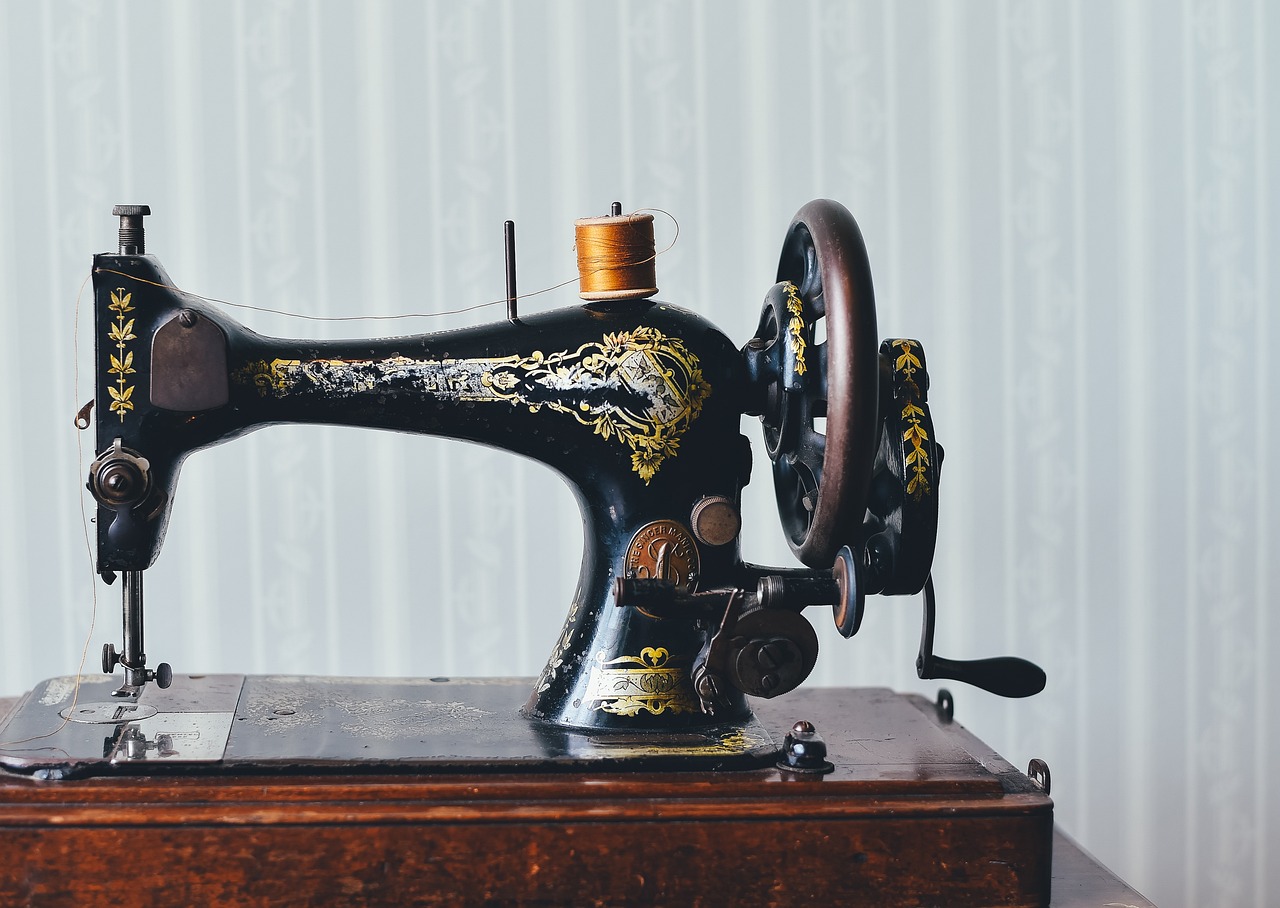
Benefits of No-Sew Crafts
No-sew crafts are an absolute treasure trove of benefits for kids, making them a popular choice among parents and educators alike. First and foremost, these projects spark creativity. Without the constraints of sewing, children can let their imaginations run wild. They can mix and match materials, colors, and designs to create puppets that are uniquely theirs. Imagine a child transforming a simple piece of felt into a vibrant, quirky monster puppet—what a fantastic way to express their individuality!
Moreover, no-sew crafts are a fantastic way to enhance fine motor skills. As kids cut, glue, and assemble their puppets, they engage in activities that require precision and coordination. This hands-on experience is not just fun; it’s a practical way to develop essential skills that they will use throughout their lives. Think of it as a workout for their little fingers!
Another significant advantage is the accessibility of materials. Most no-sew crafts require common items that are usually found around the house or can be easily purchased. Felt, fabric scraps, googly eyes, and glue are all kid-friendly and safe to use. This means that crafting can happen spontaneously, without the need for elaborate setups or expensive supplies. The simplicity of the materials encourages kids to dive into crafting whenever inspiration strikes!
Additionally, no-sew crafts provide a wonderful opportunity for collaboration and social interaction. Kids can work together on projects, sharing ideas and techniques, which fosters teamwork and communication skills. Picture a group of children gathered around a table, giggling and brainstorming their puppet designs—this not only strengthens friendships but also creates lasting memories.
Lastly, engaging in no-sew crafts can lead to a sense of accomplishment. When kids see their finished puppets, they experience pride in their work. This boost in self-esteem can be incredibly motivating, encouraging them to take on more complex projects in the future. Each puppet they create is a badge of honor, a testament to their creativity and effort.
In summary, the benefits of no-sew crafts extend far beyond simple fun. They nurture creativity, enhance fine motor skills, provide accessible materials, encourage social interaction, and build self-esteem. So, why not gather some supplies and let the crafting adventure begin? Your kids will thank you for it!
- What age group is suitable for no-sew puppet crafts?
No-sew puppet crafts are ideal for children aged 4 and up, with adult supervision recommended for younger kids. - Can I use recycled materials for puppet making?
Absolutely! Recycled materials like old clothes and cardboard can add a unique touch to your puppets. - What are some good themes for puppet shows?
Themes can include animals, fairy tales, superheroes, and more—let your child's imagination lead the way!
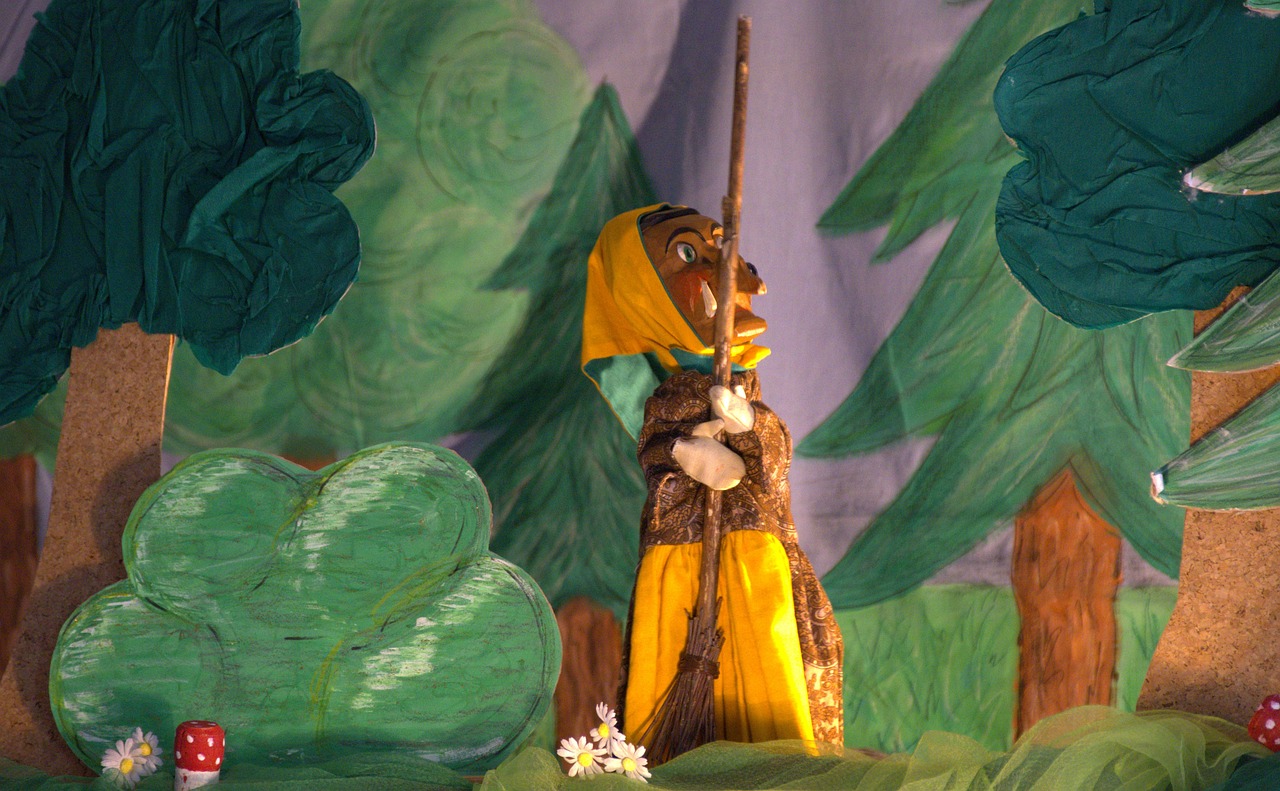
Materials Needed
When diving into the world of no-sew hand puppet crafts, having the right materials can make all the difference! Think of it as gathering your magical ingredients before cooking up a delightful recipe. The best part? Most of these materials are not only easy to find but also safe for kids to handle. To get started, here’s a list of essential items you might want to gather:
- Felt or Fabric Scraps: These are the stars of the show! Soft, colorful felt is perfect for crafting puppets that are both vibrant and easy to manipulate.
- Googly Eyes: No puppet is complete without a pair of expressive eyes! These add character and fun to any creation.
- Glue: A good non-toxic craft glue will be your best friend, helping to hold everything together without the need for sewing.
- Scissors: While we want to ensure safety, a pair of child-safe scissors is essential for cutting fabric and creating unique shapes.
- Markers or Paint: These are great for adding details and personal touches to your puppets, allowing kids to express their creativity fully.
Now that you have your materials, you can let your imagination run wild! The beauty of no-sew crafts is that they are incredibly forgiving. If you make a mistake, simply adjust your design or add more embellishments. Plus, the tactile experience of working with fabric and glue enhances fine motor skills, making this not just a fun activity but also an educational one.
For those looking to keep things eco-friendly, consider rummaging through old clothes or fabric remnants. Not only does this teach kids about recycling, but it also allows for unique puppet designs that are one-of-a-kind! Imagine turning a colorful old t-shirt into a vibrant puppet with just a few snips and some glue. This not only sparks creativity but also instills a sense of responsibility towards the environment.
Lastly, remember that crafting should be a fun and safe experience. Always supervise younger children when they are using scissors or glue, and ensure that all materials are non-toxic. With a little preparation and the right materials, you’re all set to embark on an exciting puppet-making adventure!
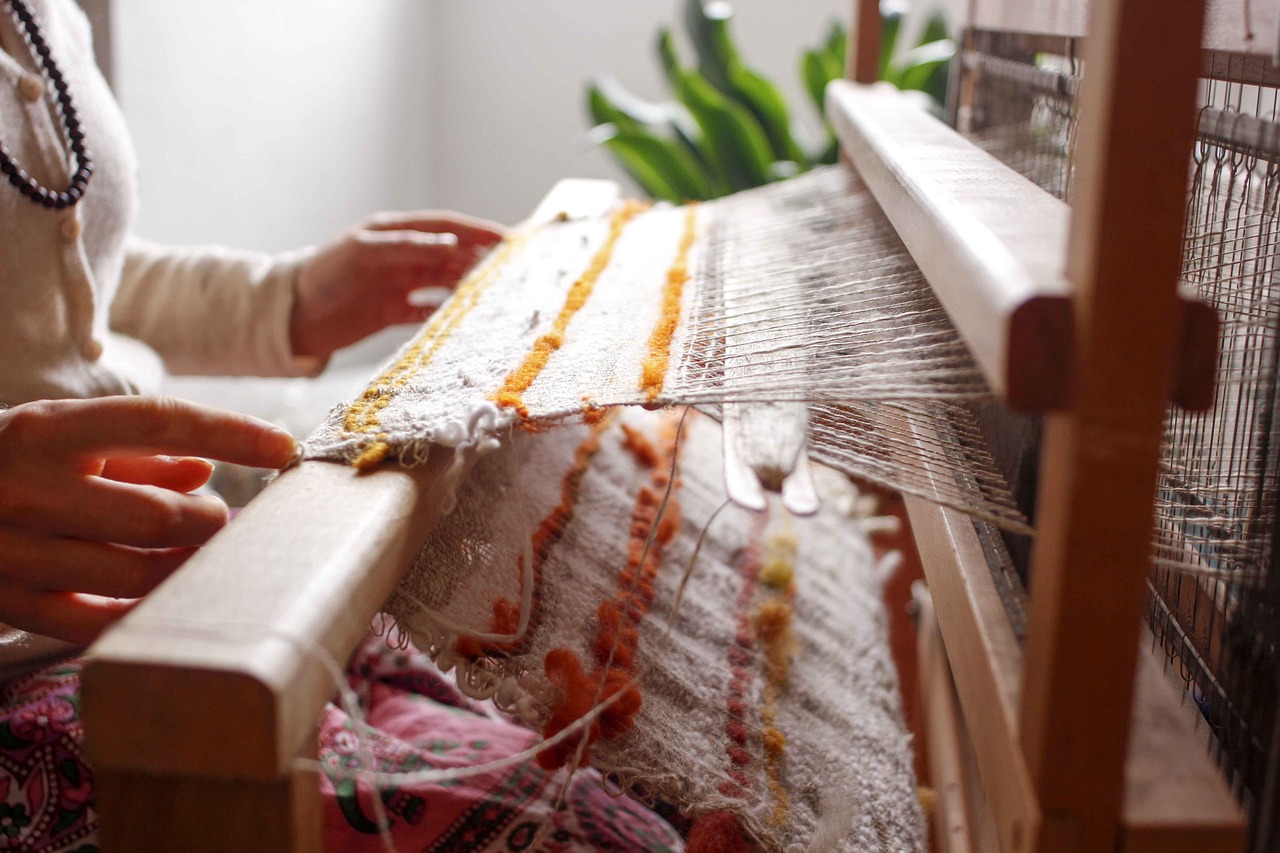
Choosing the Right Fabric
When it comes to crafting no-sew hand puppets, is crucial for both the puppet's appearance and its functionality. Imagine a puppet that feels as delightful to touch as it looks; that’s the magic of selecting the right materials! Soft, colorful fabrics like felt and fleece are not only visually appealing but also provide the flexibility and durability needed for little hands to manipulate them easily. Felt, for example, comes in a variety of vibrant colors and is readily available at craft stores, making it a popular choice for kids' projects.
Another fantastic option is fleece, which adds a cozy texture that kids love. It’s a bit stretchier than felt, allowing for more dynamic shapes and designs. When you feel the soft surface of fleece, it's hard not to think about how it could become a cuddly bear or a fluffy bunny! Additionally, if you want to take your puppet-making to the next level, consider using fabric scraps from old clothing. Not only does this promote creativity by encouraging kids to think outside the box, but it also teaches them about recycling and sustainability.
Now, let’s not forget about the importance of texture and color. A puppet made from a mix of fabrics can have a more engaging appearance. For instance, combining smooth and fuzzy textures can create a visually stimulating character that captures attention. You might even create a puppet with a shiny fabric for the eyes, which can add an extra layer of fun! Keep in mind that the color palette you choose can reflect the personality of the puppet. Bright colors can evoke happiness and excitement, while softer hues might suggest calmness or gentleness.
Here’s a quick comparison table to help you decide on the fabric:
| Fabric Type | Texture | Durability | Color Variety |
|---|---|---|---|
| Felt | Soft, sturdy | High | Wide range |
| Fleece | Soft, fluffy | Medium | Vibrant |
| Old Clothes | Varied | Varied | Varied |
Ultimately, the fabric you choose can significantly impact the puppet's overall look and feel. So, let your imagination run wild! Encourage your kids to explore different textures and colors, making the puppet-making process not just a craft but a creative adventure that they will cherish. After all, the right fabric can turn a simple hand puppet into a beloved character that sparks joy and storytelling!
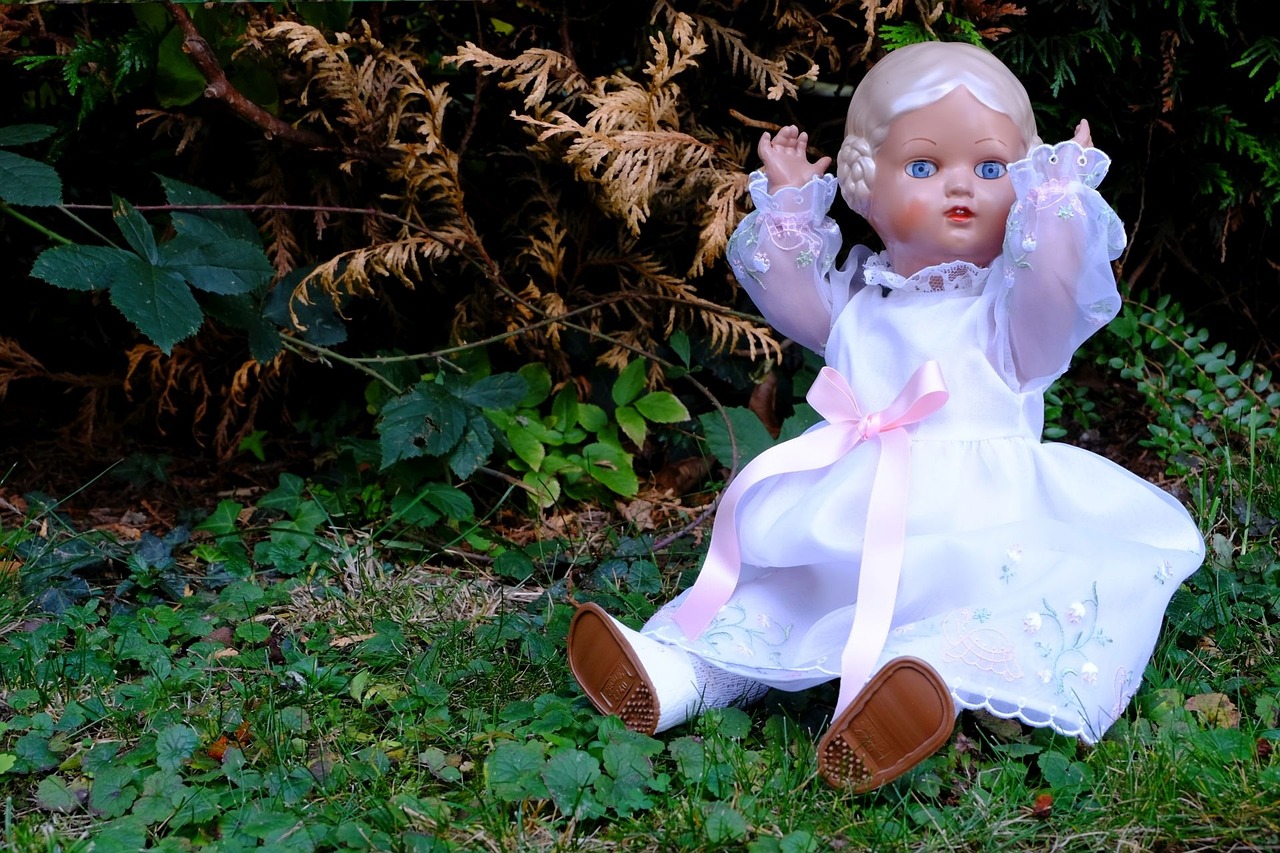
Eco-Friendly Options
In today's world, where environmental consciousness is more important than ever, incorporating into your children's crafting activities can be both fun and educational. By using recycled materials, not only do we save resources, but we also teach kids the value of sustainability. Imagine transforming an old pair of jeans into a funky puppet or using leftover fabric scraps to create a colorful character! It's like turning trash into treasure, and kids love the idea of giving new life to items that might otherwise end up in the landfill.
One of the easiest ways to introduce eco-friendly crafting is by rummaging through your household items. Here are some common materials you can use:
- Old Clothes: T-shirts, socks, and even sweaters can be cut and shaped into puppets. Just think of the character possibilities!
- Fabric Remnants: Craft stores often sell scrap fabric at discounted prices, which can be perfect for puppet-making.
- Cardboard: Use cereal boxes or packaging to create puppet bases. They are sturdy and can be painted or decorated.
- Paper Bags: Brown paper bags make excellent puppet bodies. A little creativity can turn them into anything from animals to whimsical creatures.
By encouraging kids to use these materials, we not only foster their creativity but also instill a sense of responsibility towards the environment. Plus, each puppet can tell a story of its own—like how it was once a part of something else before becoming a beloved character in a child's playtime adventures. This process of creation can spark conversations about recycling and the importance of taking care of our planet.
Moreover, crafting with recycled materials can lead to unexpected surprises. Kids might discover unique textures and colors that they wouldn't typically find in new materials. This exploration can ignite their imagination, leading to even more innovative puppet designs. So, as you gather materials for your no-sew puppet crafts, remember that the possibilities are endless when you think outside the box—or in this case, outside the trash bin!
Q: What types of fabrics are best for no-sew puppets?
A: Soft and colorful fabrics like felt, fleece, and old clothing are excellent choices. They are easy to manipulate and create vibrant puppets.
Q: Can I use non-fabric materials for puppet making?
A: Absolutely! Cardboard, paper bags, and even plastic containers can be transformed into fun puppets. Just let your creativity flow!
Q: How can I ensure the crafting process is safe for my kids?
A: Always supervise children while crafting, especially when using scissors and glue. Opt for non-toxic materials and age-appropriate tools to keep it safe and fun.
Q: What themes work well for puppet shows?
A: Kids can explore various themes such as animals, fairy tales, or superheroes. Themed puppets can enhance storytelling and make performances more engaging!
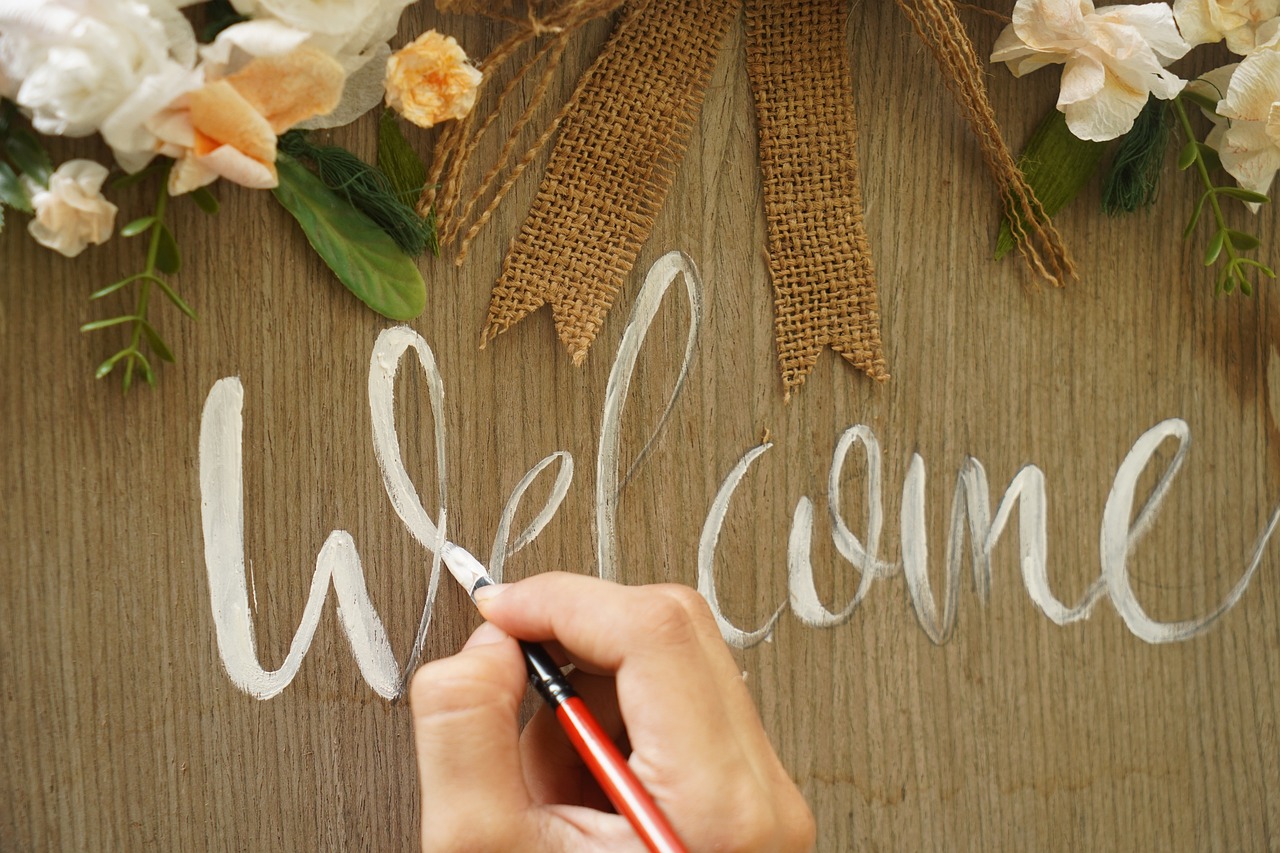
Safety Considerations
When diving into the world of no-sew puppet crafting, safety should always be the top priority. Kids are naturally curious and eager to explore, but it's crucial to create a safe crafting environment to prevent any mishaps. First and foremost, ensure that all materials used are non-toxic and suitable for children's use. This means opting for safe glues, paints, and other crafting supplies that won't pose any harm if accidentally ingested or mishandled.
Supervision is key during the crafting process, especially when children are using scissors or glue. It's important to guide them on how to use these tools properly. For instance, when using scissors, demonstrate the correct way to hold and cut, emphasizing the importance of keeping fingers away from the blade. You might say, "Think of the scissors as a little monster; we want to keep our fingers safe from its bite!"
Additionally, consider creating a designated crafting area that is free from distractions and hazards. This could be a table covered with a protective cloth and equipped with all necessary supplies. Here are some essential safety tips to keep in mind:
- Always check the age recommendations on materials and tools.
- Keep sharp objects out of reach when not in use.
- Ensure that the workspace is well-lit to avoid accidents.
- Encourage kids to clean up spills immediately to prevent slips.
By fostering a safe crafting environment, you not only protect the children but also allow their creativity to flourish without fear of accidents. Remember, the goal is to have fun while crafting, and with the right precautions, everyone can enjoy making their unique puppets!
Q: What age is appropriate for no-sew puppet crafts?
A: No-sew puppet crafts can be enjoyed by children as young as 4 years old, with adult supervision. Older kids, around 8 years and up, can take on more complex designs independently.
Q: Can I use old clothes for making puppets?
A: Absolutely! Old clothes are a fantastic eco-friendly option for puppet making. Just make sure they are clean and free from any sharp objects like buttons or zippers.
Q: What types of glue are safe for kids?
A: Look for washable and non-toxic glues, such as school glue or craft glue, which are safe for children to use.
Q: How can I encourage my child to use their puppet for storytelling?
A: Create a small stage area at home and encourage your child to put on a show. You can also read stories together and suggest they act them out using their puppets!
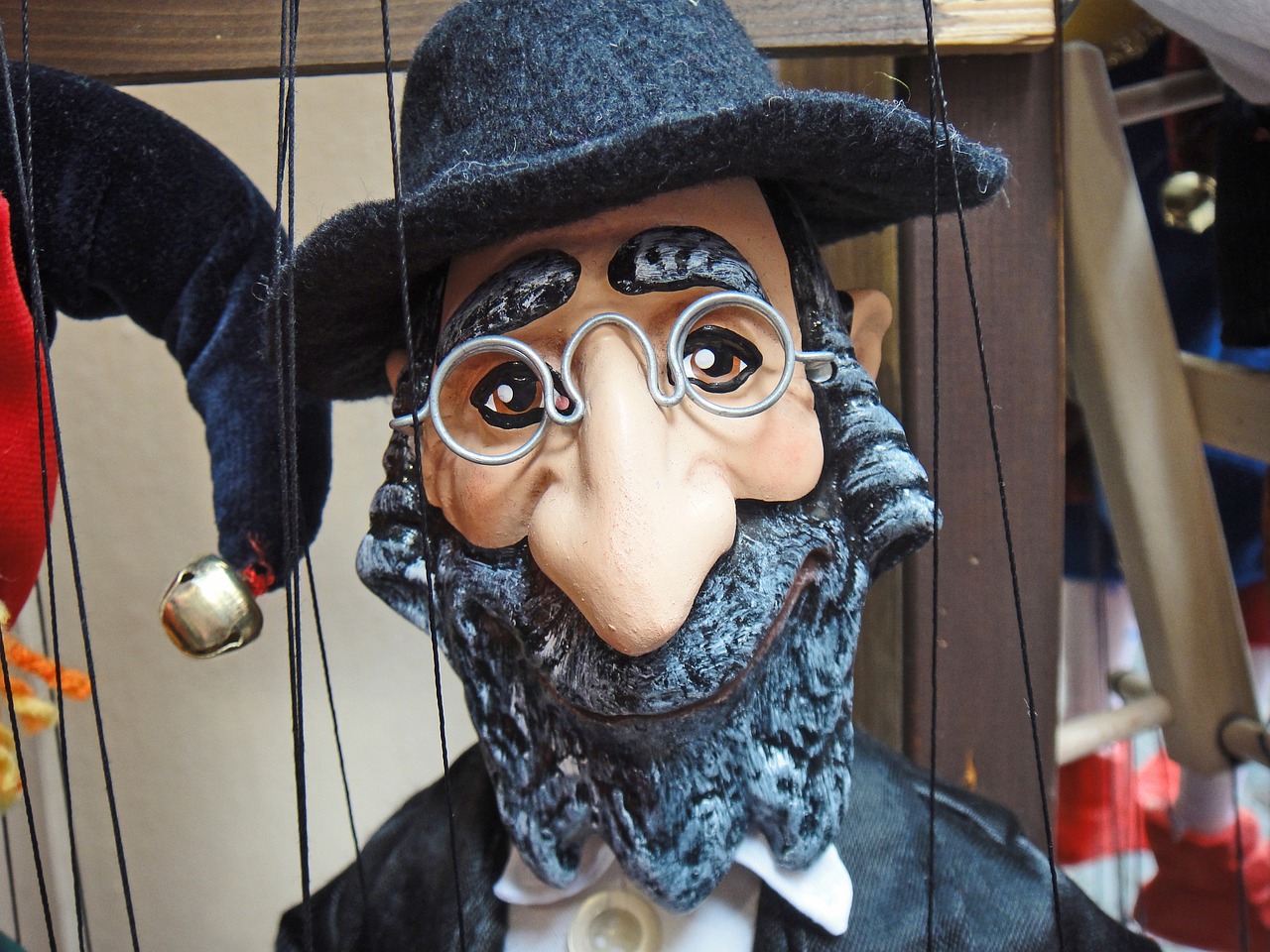
Simple Puppet Designs
When it comes to creating , the possibilities are endless! Starting with easy shapes allows children to unleash their creativity without feeling overwhelmed. Think of these designs as the building blocks of puppet making, where each puppet can become a unique character in their imaginative world. For instance, a basic animal puppet can be made by cutting out simple shapes from felt or fabric scraps. A circle for the head, a larger oval for the body, and smaller shapes for ears and limbs can come together to create a delightful creature!
These designs not only encourage creativity but also help develop fine motor skills as kids cut, glue, and assemble their puppets. Here are a few simple puppet ideas to get started:
- Animal Puppets: Create a variety of animals like cats, dogs, or even imaginary creatures. Use different colors and textures to make them stand out!
- Monster Puppets: Unleash the wild side! Kids can design silly monsters with big eyes and colorful fur, allowing for a lot of creativity.
- Character Puppets: Whether it's a superhero or a fairy tale character, using basic shapes and adding distinctive features can bring their favorite stories to life.
To make these designs even more exciting, consider using a template. Templates can guide kids in cutting out the right shapes, making the process easier and more enjoyable. You can create a simple table of ideas for puppet templates:
| Puppet Type | Materials Needed | Design Features |
|---|---|---|
| Animal Puppet | Felt, googly eyes, glue | Simple shapes like circles and ovals |
| Monster Puppet | Fabric scraps, pom-poms, markers | Big eyes, wild colors, and fun textures |
| Character Puppet | Cardboard, paint, fabric | Unique clothing and accessories |
As kids work on these simple puppet designs, they not only create fun toys but also develop their storytelling skills. Each puppet can take on a personality, leading to countless adventures during playtime. Plus, these designs are perfect for group activities, where kids can collaborate and come up with their own puppet shows, enhancing social skills and teamwork.
In conclusion, simple puppet designs are an excellent way to spark creativity and engage children in hands-on activities. By starting with basic shapes and allowing room for personalization, kids can enjoy a fulfilling crafting experience that results in delightful puppets ready for imaginative play!
Q: What materials do I need for no-sew puppet crafts?
A: Common materials include felt, fabric scraps, googly eyes, glue, and scissors. These are easily accessible and safe for kids to use.
Q: Are there any safety concerns when crafting with children?
A: Yes, it's important to ensure that all materials are non-toxic and that children are supervised, especially when using scissors or glue, to prevent accidents.
Q: Can these puppet designs be used for educational purposes?
A: Absolutely! Puppets can be used to teach storytelling, enhance language skills, and encourage creativity in various subjects.

Creative Themes for Puppets
When it comes to puppet-making, the sky's the limit! Incorporating creative themes into your puppet designs can add a whole new layer of fun and imagination. Think about it: what if your child could create a puppet that embodies their favorite story, character, or even an animal they adore? Themed puppets not only spark creativity but also enhance storytelling, making playtime even more engaging.
Let’s dive into some exciting themes that can inspire your little ones to unleash their creativity:
- Animal Kingdom: From the majestic lion to the playful dolphin, animals are a hit! Kids can choose their favorite animals and bring them to life through puppetry. This theme can also be an educational opportunity to teach children about different species and their habitats.
- Fairy Tales: Imagine a puppet that looks like Little Red Riding Hood or a fierce dragon from a classic fairy tale. This theme allows kids to recreate their favorite stories and even invent new endings. The possibilities are endless!
- Superheroes: Every child has a hero they look up to. Why not let them create a puppet version of their favorite superhero? This theme encourages kids to think about what makes a hero and how they can embody those traits in their puppet shows.
- Space Adventures: For the budding astronaut, creating puppets of aliens, astronauts, or planets can lead to imaginative space-themed performances. This theme can also spark interest in science and the universe.
As children work on these themes, they can also engage in collaborative storytelling, where they can brainstorm plots and scenarios for their puppets. This not only enhances their creativity but also promotes teamwork and communication skills.
Moreover, puppets can serve as a bridge for kids to express their feelings and thoughts. For instance, a puppet representing a character from a story they relate to can help them articulate their emotions in a safe and fun way. The act of bringing a puppet to life allows children to explore their imagination and develop their narrative skills.
And let’s not forget the joy of hosting a puppet show! Once the puppets are created, kids can put on performances for family and friends. This provides a fantastic opportunity for them to showcase their hard work and creativity, while also boosting their confidence. Imagine the excitement on their faces as they take center stage, bringing their characters to life!
In conclusion, creative themes for puppets not only make the crafting process enjoyable but also enrich children's playtime. They encourage storytelling, foster creativity, and can even serve as a tool for learning. So gather your materials, let your imagination run wild, and watch as your child's creativity flourishes!
Q: What materials do I need for no-sew puppets?
A: You can use felt, fabric scraps, googly eyes, glue, and even recycled materials like old clothes or cardboard. The key is to have fun and be creative!
Q: Are no-sew puppets safe for young children?
A: Yes, as long as you use non-toxic materials and supervise them, especially when using scissors or glue. Safety is always a priority!
Q: Can we incorporate educational themes into puppet making?
A: Absolutely! You can create puppets that represent historical figures, scientific concepts, or even literary characters to make learning more engaging.
Q: How can we organize a puppet show?
A: Gather a small audience of family or friends, set up a simple stage (even a table can work), and let the kids perform their puppet shows. It’s a great way to build confidence and have fun!
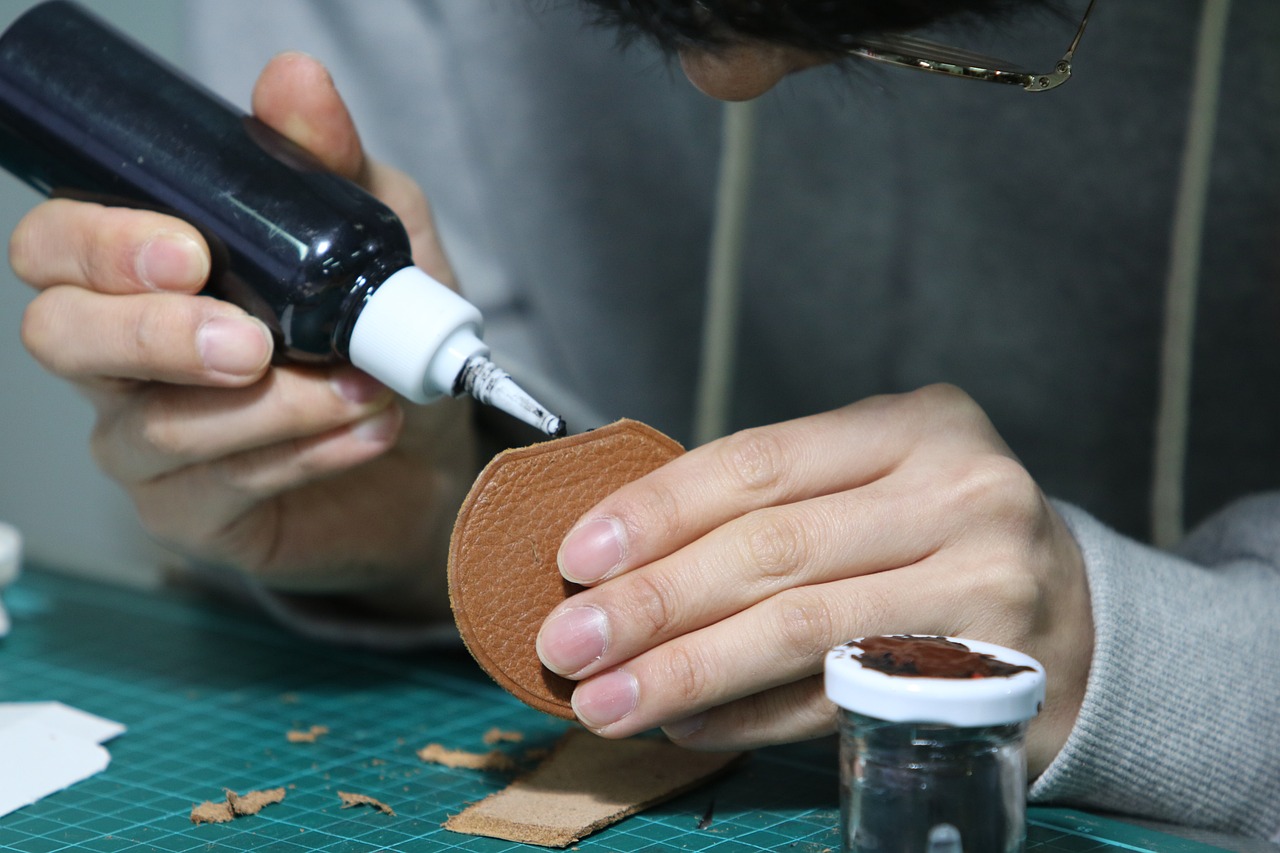
Storytelling with Puppets
Puppets are not just toys; they are gateways to a universe of imagination and creativity! When kids engage in storytelling with their handmade puppets, they dive into a world where anything is possible. Imagine your child, a little director of their own puppet theater, bringing characters to life with just a few simple movements and a dash of creativity. This experience not only entertains but also enhances their narrative skills and boosts their confidence. Isn't it amazing how a simple puppet can transform a story into a vibrant performance?
Using puppets in storytelling is like adding a splash of color to a black-and-white drawing. Kids can act out their favorite tales or even create new ones, allowing their imaginations to run wild. For instance, a child might take a simple story like "The Three Little Pigs" and give it a unique twist by introducing a superhero pig who saves the day. The possibilities are endless! This kind of imaginative play encourages children to think outside the box and develop their storytelling abilities.
Moreover, storytelling with puppets can foster collaboration among kids. When they work together on a puppet show, they learn to share ideas, negotiate roles, and combine their creativity. This teamwork is invaluable, as it teaches them important social skills while they have fun. Imagine a group of kids huddled together, brainstorming ideas for their puppet show, each one contributing their thoughts and building upon each other's creativity. It's a beautiful sight!
To get started, you don’t need a fancy stage or elaborate scripts. A simple living room floor can become a stage, and a few lines can turn into a full-fledged performance. Encourage your kids to use their puppets to express emotions, convey messages, or even tackle real-life situations in a playful manner. This not only makes storytelling more engaging but also helps them process their feelings and experiences.
Incorporating different themes can also spice up storytelling sessions. For example, a puppet show themed around the jungle could feature animals discussing friendship and teamwork, while a fairy tale theme might explore bravery and kindness. By allowing kids to choose their themes, you give them the freedom to express their interests and values, making the storytelling experience even more meaningful.
In conclusion, storytelling with puppets is a powerful and enriching activity that combines creativity, learning, and fun. It’s not just about the stories themselves; it’s about the journey of creation, collaboration, and expression that kids embark on while bringing their puppets to life. So, gather those puppets, unleash your imagination, and let the storytelling begin!
- What age is appropriate for puppet making? Kids as young as three can enjoy simple puppet crafts, while older children can engage in more complex designs.
- Do I need special materials for puppet making? No, common materials like felt, fabric scraps, and glue are perfect for creating no-sew puppets.
- Can puppets be used for educational purposes? Absolutely! Puppets can help teach storytelling, social skills, and even subjects like math and science through creative play.
- How can I encourage my child to tell stories with their puppets? Create a puppet theater at home, provide them with a variety of puppets, and encourage them to act out their favorite stories or invent new ones!

Hosting a Puppet Show
Hosting a puppet show is not just about putting on a performance; it's an incredible opportunity for kids to unleash their creativity, build confidence, and engage in teamwork. Imagine the excitement as the little ones gather their handmade puppets, ready to bring their stories to life! This event can be as simple or elaborate as you want, making it a fantastic way to showcase the hard work and imagination that went into creating those no-sew puppets.
To get started, it's essential to create a cozy and inviting atmosphere. You can set up a small stage using a table and a colorful cloth as a backdrop. This can be an old sheet or even a large piece of felt that matches the theme of the puppets. Lighting is also key—soft, warm lights can create a magical ambiance that draws the audience in. Don't forget to encourage the kids to come up with a catchy name for their puppet show; a fun title can spark interest and excitement!
Next, involve the kids in the planning process. Ask them to brainstorm story ideas or themes for the show. This could be anything from a classic fairy tale to an original adventure featuring their puppet characters. Encourage them to think about the plot, the roles of each puppet, and how they will interact with one another. This collaborative effort not only enhances their storytelling skills but also fosters a sense of ownership over the performance.
As the show approaches, it's a great idea to hold rehearsals. These practice sessions are crucial for helping the children get comfortable with their roles and the flow of the story. During rehearsals, they can experiment with different voices and movements for their puppets, making the characters come alive. Remind them that it's okay to make mistakes; the joy of puppet shows often comes from the unexpected moments that happen on stage!
On the day of the performance, gather family and friends to be the audience. You could even create tickets for the show, which adds an extra layer of excitement. As the show begins, encourage the kids to project their voices and engage with the audience. This experience not only boosts their self-esteem but also teaches them valuable skills in public speaking and performance.
After the show, take a moment to celebrate everyone's hard work. You can have a small gathering with snacks and refreshments, where the kids can share their favorite moments from the performance. This is also a great time for them to reflect on what they learned and how they can improve for the next show. Remember, the goal is to have fun and foster creativity in a supportive environment!
In summary, hosting a puppet show can be a delightful and enriching experience for kids. It combines creativity, teamwork, and storytelling in a way that is both entertaining and educational. So, gather those puppets, invite your audience, and let the magic unfold!
- What age group is suitable for hosting a puppet show? Generally, puppet shows are suitable for children aged 4 and up. However, even younger kids can enjoy participating with adult supervision.
- Do I need any special equipment for the puppet show? No special equipment is required! A simple table, a backdrop, and the puppets made from your no-sew crafts will suffice.
- How long should the puppet show be? Aim for a duration of 10-20 minutes. This keeps the audience engaged without losing their interest.
- Can the puppets be reused for future shows? Absolutely! The beauty of no-sew puppets is that they can be reused and reimagined for different stories and performances.
Frequently Asked Questions
- What are no-sew hand puppets?
No-sew hand puppets are fun crafts that kids can create without the need for sewing tools or skills. Instead of stitching, these puppets are made using materials like felt, fabric scraps, glue, and other easy-to-handle supplies, making them perfect for young crafters.
- What materials do I need to make no-sew puppets?
To get started on your no-sew puppet-making adventure, gather materials such as felt, fabric scraps, googly eyes, scissors, and glue. These items are not only easily accessible but also safe for kids to use, ensuring a fun and engaging crafting experience.
- Are there eco-friendly options for making puppets?
Absolutely! Using recycled materials is a fantastic way to create unique puppets while teaching kids about sustainability. Old clothes, fabric remnants, and even cardboard can be transformed into amazing puppets, all while promoting environmental awareness.
- How can puppets enhance storytelling for kids?
Puppets are powerful tools for storytelling. Kids can use their handmade puppets to act out stories, which enhances their narrative skills and encourages imaginative play. This interactive method allows children to express their creativity and collaborate with others during performances.
- What are some simple puppet designs for beginners?
Starting with simple designs is key for building confidence in young crafters. Easy shapes like animals, monsters, or familiar characters can be created quickly, making them ideal for beginners or group activities. These designs help kids learn the basics while having fun.
- How can I host a puppet show for kids?
Hosting a puppet show can be a delightful way to showcase the kids' creations. Set up a small stage, encourage teamwork, and let the kids perform their imaginative stories. This activity boosts their confidence and provides a wonderful opportunity for them to share their creativity with an audience.



















